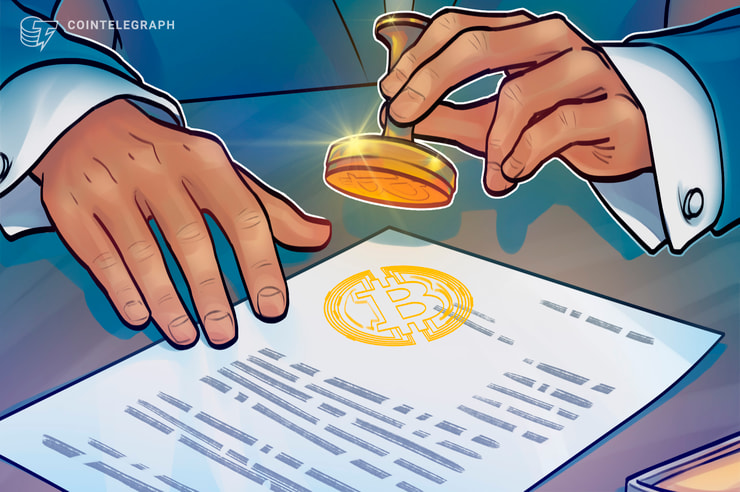SRC-20 tokens, the token standard underpinning Bitcoin Stamps (a protocol for secure, tradeable art maintained securely), have gained significant attention in recent times. The protocol is meant for embedding data in Bitcoin transactions, which is quite similar to what the BRC-20 standard does. However, both protocols employ distinct approaches when it comes to the embedding of data.
Often referred to as “Bitcoin's nonfungible tokens (NFTs),” Stamps incorporates concepts inspired by Counterparty, a peer-to-peer (P2P) platform based on Bitcoin. Additionally, the platform traces its origins back to colored coins, a collection of techniques used to differentiate certain units of a cryptocurrency from others.
Akin to ERC-20 tokens on Ethereum, SRC-20 tokens allow users to mint tokens on Bitcoin, a blockchain that was originally designed to promote a decentralized financial system and take control back from financial elites. The introduction of Ordinals and now SRC-20 tokens has broadened the utility of the Bitcoin blockchain, transforming it from a mere store of value to a platform with expanded use cases. Nonetheless, opponents disagree with the development, as they feel such tokenization is making Bitcoin deviate from its path as envisioned by Satoshi Nakamoto.
Interestingly, the token standard has been named SRC-20, as it rhymes well with the legendary ERC-20 and, thereafter, BRC-20.
This article will discuss the SRC-20 standard and how it differs from BRC-20, explain how the technology works under the hood and shed light on how to buy SRC-20 tokens.
Colored coins and Ordinals
The story of SRC-20s harkens back to colored coins. Though the concept didn't take off, it led to further innovative protocols like BRC-20 and, thereafter, SRC-20.
Colored coins
Colored coins refer to specific Bitcoin (BTC) loaded with additional metadata to make them distinct from normal Bitcoin. The objective of colored coins was to make Bitcoin feasible for non-monetary transactions. Though the idea never sailed out on its own, it did act as an inspiration for similar but more advanced technologies later.
Ordinals
Launched by Casey Rodarmor in January 2023, the Bitcoin Ordinals protocol facilitates inscribing of digital content onto the Bitcoin blockchain. Rodarmor, a programmer and an artist, was keen on creating an immutable on-chain presence of digital content on the genesis blockchain and replicate somewhat similar experiences to Ethereum-based NFTs.
Bircoin Ordinals are based on Ordinal theory, which gives satoshis individual identities and enables them to be imbued with meaning, transferred and tracked. The development enabled storage of digital content in satoshis.
Ordinals are based on the BRC-20 standard, which enables users to use a script for attributing tokens to individual satoshis. This mechanism is quite different from the EVM (Ethereum Virtual Machine), which uses smart contracts to mint NFTs. The BRC-20 token standard embeds JSON data into Ordinal inscriptions.
Since its launch in March 2023, the popularity of BRC-20s has consistently gone up. ORDI, the first and most popular BRC-20 token, started as a meme but has quickly gone mainstream. More BRC-20 tokens have followed, such as MEME, VMPX, PEPE and BANK.
Understanding Stamps and how they differ from Ordinals and BRC-20
Created by Twitter user Mike In Space, Stamps allow for the direct storage of data, such as text and images, using UTXO, or the Unspent Transaction Output. It ensures permanent blockchain storage that is impossible to prune. UTXOs are the individual units of cryptocurrency that are created and held as a result of previous transactions on the blockchain.
This is in contrast with BRC-20s and Ordinals, where metadata can be interfered with. The Bitcoin community resisted this sort of censorship or limitation, prompting developers to look for enhancements like ORC-20 (facilitating backward compatibility) and then SRC-20 (immutability of data).
Here is a comparison of SRC-20 and BRC-20 tokens:

How Stamps work
Minting of Stamps is based on the Counterparty protocol, an open-source, P2P protocol built on top of the Bitcoin blockchain in 2014. Users burn BTC in exchange for the native Counterparty (XCP) coin that they pay for in the execution of the smart contract code.
For storing up to 80 bytes of data, the protocol uses the “OP_Return” function. In case the file is larger than 80 bytes, the data gets stored in multi-sig across multiple outputs.
For minting Bitcoin tokens, Counterparty converts an image to text and encodes it as a Base64 file, appending “Stamp:” before the text. The protocol then broadcasts the encoded file to the Bitcoin network, where the file is segregated, validated and recompiled, bringing the original image back.
How to buy SRC-20 tokens
To buy SRC-20 tokens, one needs to open up two sites separately: stampsrc.github.io and stampchain.io/src20.
One also needs to download Hiro Wallet as a browser extension. The wallet has been specifically developed for Bitcoin-based apps.
Click “Receive” to arrive at another window, where one can get Bitcoin Stamps.

Copy the address and paste it in the bottommost text box on the screen at stampchain.io/src20.
Select “Mint” from the uppermost list box. In the “Tick” text box, fill in the ticker using the information on stampsrc.github.io. One can choose any token from the hundreds available. For instance, one could pick the ticker “Kevin,” pick the number of tokens as “10” and click “Quote.”

Stampchain.io will present the total print price in BTC and the fee rate in satoshis. Two buttons appear as well: “Quote” and “Stamp.” Click the button “Stamp.”
The screen presents the user with the amount of BTC to send along with an address and the QR code. Once the payment is made to the given address, users receive SRC-20 tokens at the address they had copied and pasted before.
The road ahead
Stamps are a technology still in their infancy, and one can expect development of tools to make the ecosystem more efficient and prompt use cases that encourage adoption. Basically, buying Stamps is like purchasing a large image and downloading it bit by bit. One spends BTC to get Stamps, which are data pieces stored in UTXOs.
The emerging technology could also lead to a hard fork of Bitcoin if mainstream adoption of Stamps picks up. There is a considerable number of purists in the community who want to keep Bitcoin just as a store of value and have reservations against the genesis blockchain becoming like altcoins. If the reformists insist, it could lead to the division of the community.







